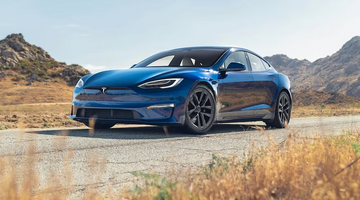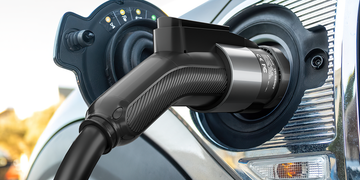What types of electric vehicle charging piles are there? Charging piles (or charging station) can convert electricity on the grid into electricity standards that can be used to charge electric vehicles. Charging piles generally provide two charging methods: slow charging and fast charging.
As electric vehicles (EVs) become an integral part of our transportation landscape, the need for diverse and efficient charging solutions has never been more apparent. Electric vehicle charging piles, or charging stations, come in various types to cater to the diverse charging needs of EV owners. In this article, we explore the different types of electric vehicle charging piles, ranging from standard household outlets to high-speed DC fast chargers, providing readers with a comprehensive understanding of the options available.
What types of electric vehicle charging piles are there?
Level 1 Charging: Basic Convenience at Home
Description: Level 1 charging involves using a standard household electrical outlet, typically at 120 volts AC.
Charging Speed: Slow charging, suitable for overnight charging at home.
Use Case: Ideal for residential charging where time is not a critical factor.
Level 2 Charging: Accelerating the Charging Experience
Description: Level 2 charging utilizes higher voltage, usually at 240 volts AC, requiring dedicated charging equipment.
Charging Speed: Faster than Level 1, suitable for daily charging needs at home, workplaces, and public locations.
Use Case: Commonly found in public places and residential settings, providing an efficient charging option for EV owners.
DC Fast Charging (Level 3 Charging): Rapid Pit Stops on the Road
Description: DC Fast Charging, or Level 3 charging, utilizes direct current (DC) to offer significantly higher power levels than Level 1 and Level 2 chargers.
Charging Speed: Rapid charging, designed for quick pit stops during long journeys.
Use Case: Strategically located along highways and major travel routes for fast charging during road trips.
Tesla Superchargers: Proprietary Power for Tesla Vehicles
Description: Tesla Superchargers are a proprietary charging network established by Tesla for their electric vehicles.
Charging Speed: High charging speed, exclusive to Tesla vehicles.
Use Case: Dedicated charging stations strategically located for Tesla owners, ensuring quick and efficient charging for their vehicles.
Wireless Charging: Cable-Free Convenience
Description: Wireless charging eliminates the need for physical cables, using inductive or resonant charging technology.
Charging Speed: Varies, generally falling between Level 1 and Level 2 charging speeds.
Use Case: A convenient option for residential and commercial use, offering a cable-free and hassle-free charging experience.
Smart Charging Stations: Connectivity and Control
Description: Smart charging stations come equipped with communication and connectivity features, enabling monitoring, control, and additional functionalities.
Charging Speed: Can vary based on the specific charging station, offering Level 2 or DC Fast Charging options.
Use Case: Provides advanced features such as remote accessibility, payment processing, and real-time monitoring, enhancing the overall charging experience.
Telgeoot Charging Pile

· Up to 44 mi of range added per hour at 11 kW / 48 amp output
· Auto-sensing handle to open charge port
· Monitor and manage your charging schedule and usage from the Tesla app
· Wi-Fi connectivity for over-the-air updates, remote diagnostics and access controls
· Versatile indoor / outdoor design
· Variable amperage configurations depending on installation location
· Power-share with up to six Wall Connectors
· 19.6-foot cable length
· One-year warranty for residential use
· Easy installation for hassle-free setup
Learn more: charging pile
What types of electric vehicle charging piles are there? As the electric vehicle charging infrastructure continues to evolve, understanding the different types of electric vehicle charging piles empowers EV owners to make informed decisions based on their individual needs and preferences. From the convenience of home charging to rapid pit stops on the road, the diverse array of charging options contributes to the widespread adoption and accessibility of electric vehicles.





